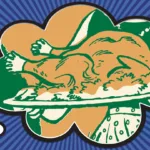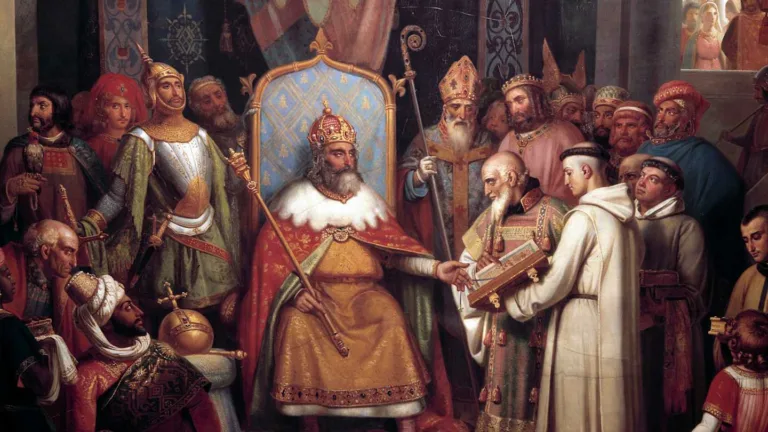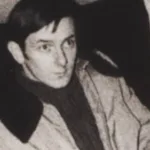The Victorian era was a time of great intellectual curiosity and a love for the finer things in life. From intricate lacework to elaborate gardens, Victorians reveled in complexity and detail. This fascination extended to their pastimes As Well, with word games and puzzles becoming a popular form of entertainment among the upper classes.
One particularly captivating genre that emerged during this time was Victorian Riddles. These clever conundrums often employed intricate metaphors and layered symbolism, challenging the intellect and rewarding those Who Could Unravel Their Secrets. They offered a glimpse into the Victorian mind, revealing its penchant for logic, wit, and a touch of the dramatic.
So, if you’re looking to test your deductive skills and delve into a fascinating period of history, prepare yourself to embark on a journey through five classic victorian riddles. Each riddle presents a unique puzzle, waiting to be solved with a combination of critical thinking and perhaps a dash of creative inspiration.
Victorian Riddles: A Fascinating Trend
The popularity of riddles during the Victorian era wasn’t simply a passing fad. They were deeply woven into the fabric of society, appearing in newspapers, magazines, and even etiquette guides for the well-to-do. Solving riddles was seen as a mark of intelligence and sophistication, a way to demonstrate one’s mental agility and command over language.
These puzzles often explored themes relevant to Victorian life – morality, Social Hierarchy, Scientific Advancements, and religious beliefs. They could be playful and humorous, or delve into darker, More Philosophical Concepts. This multifaceted nature of Victorian riddles reflects the complex and multifaceted society that produced them.
The act of solving a riddle wasn’t just about finding the right answer; it was a social activity. Friends and families would gather to Challenge Each Other, engaging in lively debates and sharing Clever Solutions. This fostered a sense of intellectual community and provided entertainment for all ages.
Delving into Classic Puzzles
Let’s journey now into the world of these captivating puzzles, examining five classic riddles that exemplify the ingenuity and charm of the Victorian era. Each riddle presents a unique challenge, requiring you to think outside the box and embrace the spirit of Playful Deception.
The first puzzle we encounter is “The Bishop Of Winchester’s Riddle,” a cryptic description of the human body that will test your anatomical knowledge. Next, prepare to be bewildered by “Captain of a Party Small,” a riddle centered around the seemingly simple letter A that holds surprising depths. Then, we delve into the enigmatic world of ravens with “Hallams Riddle,” believed to hold hidden symbolism and Poetic Meaning. Our journey continues with “Playing Chicken,” a Shakespearean twist on traditional riddles that explores the complexities of Claudius’s character. Finally, we confront Christina Rossetti’s riddle about objects with heads and eyes, a puzzle that invites reflection on perception and reality.
These five riddles represent just a glimpse into the fascinating world of Victorian Riddles. They invite us to step back in time, Engage Our Minds, and appreciate the enduring power of wordplay and intellectual curiosity.
 Turkey Leg Hats & Covers: A History of Festive Feast
Turkey Leg Hats & Covers: A History of Festive FeastThe Bishop of Winchester’s Riddle and Other Victorian Gems
Our first stop on this journey through Victorian riddles is “The Bishop Of Winchester’s Riddle,” a deceptively simple puzzle that describes the human body in cryptic terms. It reads: “I have cities, but no houses; forests, but no trees; water, but no fish.” Can you decipher what it refers to? Think about the various components of the human body and how they might be metaphorically described as cities, forests, or bodies of water.
Next, We Encounter “Captain of a Party Small,” a riddle centered around the letter A. It states: “I am always coming but never arrive, I am always near but also Far Away.” This seemingly straightforward puzzle requires you to think creatively about the nature of the letter A and its Symbolic Significance. Consider how it can represent concepts Beyond Its Literal Form.
“Hallams Riddle,” a timeless enigma shrouded in mystery, is believed to be about a raven. It poses: “What has an eye but cannot see?” This riddle invites you to consider the multifaceted nature of symbolism, where objects can represent abstract ideas. Think beyond the literal and explore the deeper meaning behind ravens and their association with wisdom, mystery, and even darkness.
Unraveling the Solutions
Now that you’ve had a chance to ponder These Intriguing Riddles, let’s unveil their solutions and delve into the cleverness behind their construction. “The Bishop Of Winchester’s Riddle” refers to a map. Cities represent towns, Forests Depict Woodland Areas, and bodies of water symbolize rivers or lakes. This deceptively simple solution highlights the Victorians’ fondness for wordplay and metaphorical thinking.
“Captain of a Party Small,” As We Now Know, is simply the letter A itself. The riddle plays on the concept of the future tense (“always coming”) and the relative nature of nearness and distance. It’s a brilliant example of how Victorians could find meaning and depth in even the most commonplace elements.
For “Hallams Riddle,” the answer is a needle. It possesses an eye but lacks the ability to see. This riddle delves into the symbolism of the raven, often associated with wisdom and foresight, juxtaposing it with the practical function of a needle.
Victorian Intellectual Pursuits
These riddles offer a fascinating glimpse into the intellectual pursuits of Victorian England. They reveal a society that valued Mental Stimulation, wordplay, and the exploration of complex ideas. The Victorians were deeply invested in education, Scientific Advancements, and philosophical debates. Riddles provided an engaging way to Test One’s intellect, Sharpen Critical Thinking Skills, and participate in these intellectual discussions.
Word puzzles weren’t just a pastime; they were seen as a tool for personal growth and social advancement. Mastering riddles demonstrated wit, creativity, and a certain level of sophistication, qualities highly prized in Victorian society. The popularity of Victorian riddles reflects the era’s emphasis on self-improvement and the pursuit of knowledge Through Diverse Means.
These puzzles also often touched upon Contemporary Social Issues, Religious Beliefs, and scientific discoveries, reflecting the multifaceted nature of Victorian life. Riddles served as a platform for exploring complex themes in an engaging and accessible way.
More for curious minds
Unlock extra content and exclusive deals tailored to your interests.










